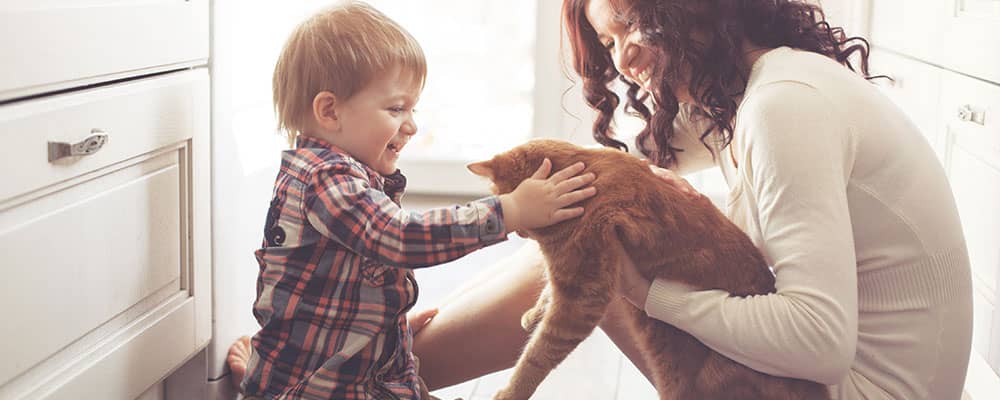Pet-Proofing Your Home
- Shantell Russell
- Home Life

If you have a furry, feathered or scaly friend, you likely care about his or her well-being. Moving into a new house might require you to make a few adjustments to ensure the safety and happiness of your pet. You may want to tweak a few of your habits and add additional features to different rooms to help make your residence pet-friendly. Follow these guidelines to pet-proof your home:
Look Out for Potential Hazards
This Old House noted that you should look for potential hazards when evaluating the safety of your home. Hanging cords or window blind strings might pose a choking, suffocation or electrocution threat. Keep these items out of the way to keep your pets safe.
Medications that are left out might also be ingested by your pets and ultimately lead to illness or other bodily harm. Keep all medications and prescription drugs in a medicine cabinet and out of reach. You may want to consider installing shelving if you don't already have any, and use baskets to tastefully store bathroom items that may cause harm to your pets. The space above your toilet might be a great place for additional storing options for your home.
Keep Potentially Harmful Foods Packed Away
While you might enjoy a bar of chocolate, your new puppy or friendly old cat may suffer from ingesting this product. The Humane Society of the United States noted there are a variety of foods that are commonly found in your house and enjoyed by humans but are potentially deadly to your pets. Fruit pits and seeds, garlic, coffee grounds, mushrooms, tomatoes, raisins and salt are some common items found in kitchens that can threaten the health of your pet. You can protect any animals that are part of your family by keeping all food sealed and put away properly.
Your garbage might be an additional threat to your pet's health. Consider clearing out a cabinet and storing a garbage can inside the space. This can keep your beloved animals from potentially chewing through the plastic and getting ahold of dangerous foods or items that they might choke on.
If you do not currently have adequate pantry space, consider installing additional cabinets in your kitchen or finding a way store food in baskets or other types of containers out of reach from you pets.
Organize Your Home for Safety
When it comes to keeping your pets safe, organizing your home is crucial to ensuring their protection. By having a designated space for knives, additional sharp objects, electric cords and other potentially threatening items you can make sure that any animals you own can safely peruse throughout the various rooms in your house.
Invest in extra shelving, cabinets or containers to keep dangerous items away from your pets while still giving yourself convenient access to them.
Keep anything that an animal might choke on out of reach.
Ensure Your Flooring Is Pet-Friendly
It is important to ensure your flooring is protected from animals regularly walking, playing and running across them. While you love your pet with all of your heart, his or her nails can destroy your floors, which would make anyone a little frustrated. The Dog Guide recommended having your floors made of hard and tough materials. If you are interested in replacing your floors for a more durable option, there are plenty of choices available. The Do It Yourself Network noted that concrete, tiling and hardwood floors are some of the popular types of floors that you can install in your home.
Concrete floors might not be a traditional flooring option you would normally consider, but they are particularly durable and you can paint or stain them to match your decor and style.
Develop the Perfect Home for You and Your Pet
You do not have to sacrifice your interior decor because you own a pet. HGTV recommended selecting fabrics and colors that match your pet's fur to help camouflage shedding. Also keep a home for your animal in mind when you are personalizing your new home. Designate a specific room for them. They do not necessarily have to be the only inhabitant of the space, but giving them an area to retire to when they are tired will help them adjust to a new home. When you are selecting new furniture or rugs, you might want to forgo the more expensive rugs and delicate fabrics. You can still have a beautiful home with more durable and less expensive accents.
In addition, it is a good idea to regularly clean, wash or brush your pets to cut down on time spent cleaning up after clusters of fur or feathers.
A pet is part of the family. Ensure that your house is theirs as well and that they feel right at home.
